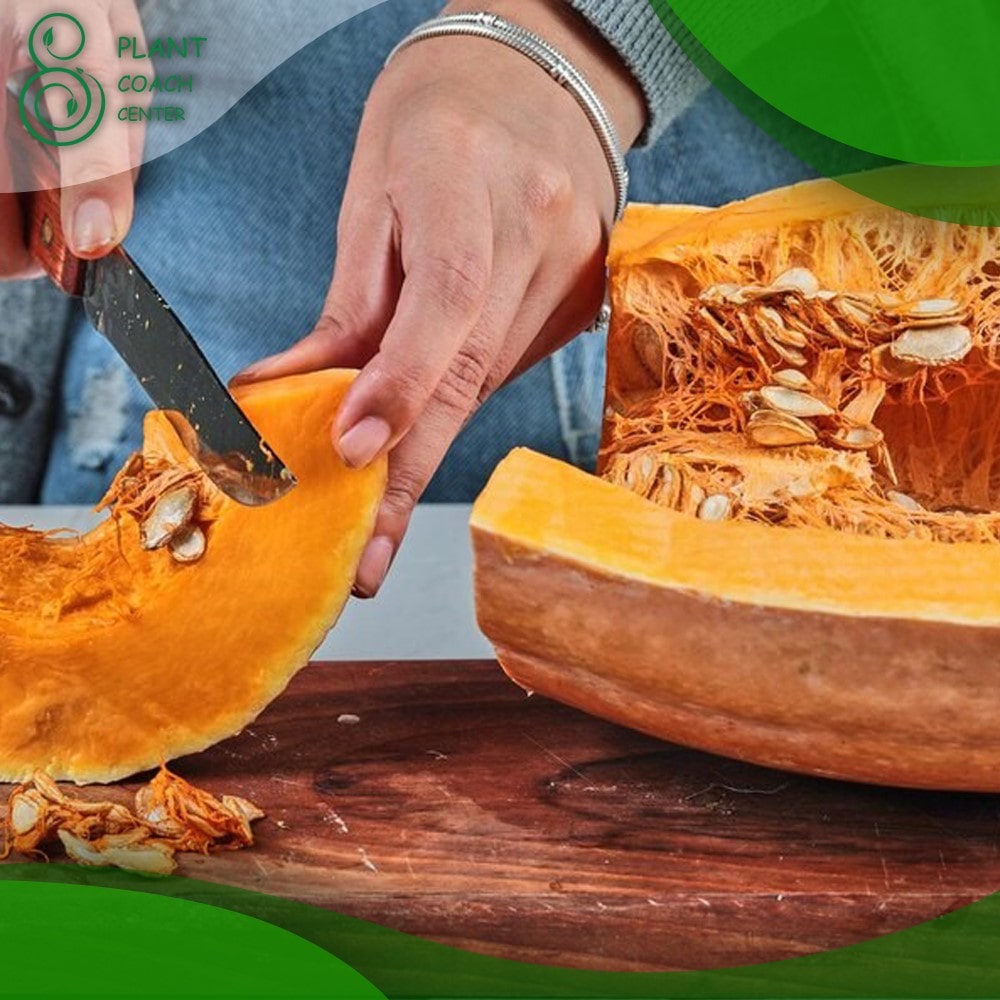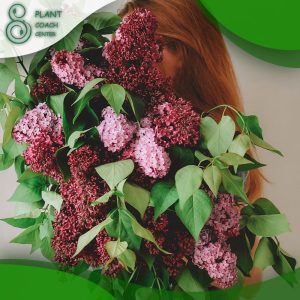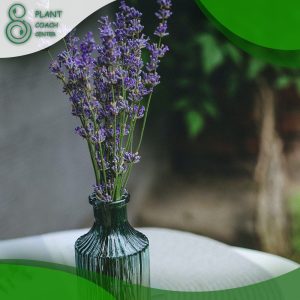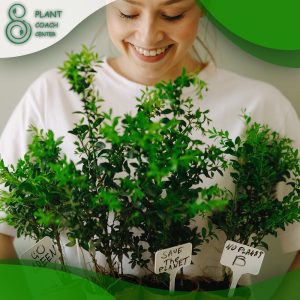When Can I Plant Pumpkin Seeds
Plant coaching is a type of consulting service that helps individuals and organizations improve their gardening skills and knowledge. Plant coaches provide personalized advice and guidance on a range of topics related to plant care, including when to plant pumpkin seeds.
If you’re new to gardening or are struggling to grow healthy plants, working with a plant coach can be a great way to learn new skills and get expert advice. In this article, we’ll cover everything you need to know about when to plant pumpkin seeds, from understanding the factors that affect planting time to preparing your soil and caring for your plants.
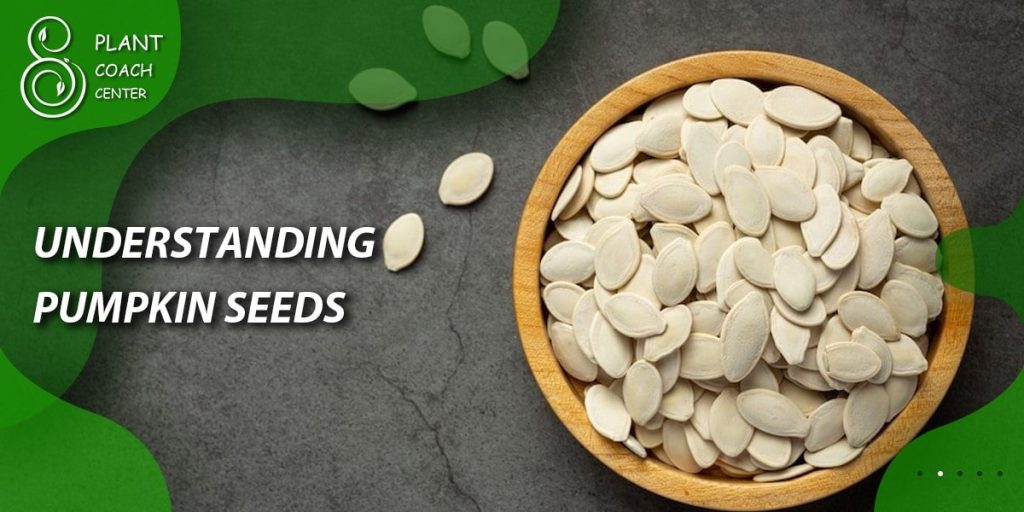
Understanding Pumpkin Seeds
Before we dive into planting and caring for pumpkin seeds, it’s important to understand what pumpkin seeds are and why they’re so valuable. Pumpkin seeds are the edible seeds of the pumpkin plant, and they’re packed with nutrients like protein, fiber, and healthy fats.
There are many different varieties of pumpkins, and each variety produces seeds with unique characteristics. Some pumpkin seeds are larger and more flavorful than others, while others are better suited for baking or roasting. When choosing pumpkin seeds for planting, it’s important to choose seeds that are fresh, high-quality, and suited to your growing conditions.
Factors Affecting Pumpkin Seed Planting Time
There are several factors that can affect when you should plant pumpkin seeds. Understanding these factors can help you determine the best time to plant your seeds and ensure that they germinate and grow successfully.
Climate and Weather Patterns
The climate and weather patterns in your region can have a big impact on when you should plant pumpkin seeds. In general, pumpkins prefer warm, sunny weather and soil that’s at least 60 degrees Fahrenheit.
If you plant your seeds too early, they may not germinate or may be killed by frost. If you plant them too late, they may not have enough time to mature before the first frost in the fall.
Soil Temperature and Conditions
Soil temperature is another important factor to consider when planting pumpkin seeds. Pumpkins require soil that’s warm and well-draining, with a pH between 6.0 and 6.8. If your soil is too cold or too wet, your seeds may rot or fail to germinate. You can use a soil thermometer to check the temperature of your soil before planting.
Geographic Location
The geographic location of your garden can also affect when you should plant pumpkin seeds. If you live in a cooler climate or at a higher altitude, you may need to plant your seeds later in the spring to avoid frost damage. If you live in a warmer climate, you may be able to plant your seeds earlier in the spring or even in the winter.
Varieties of Pumpkins
Different varieties of pumpkins have different growing requirements and may need to be planted at different times.
Some varieties, such as miniature pumpkins, may mature faster than others and can be planted later in the season. Other varieties, such as giant pumpkins, may require a longer growing season and need to be planted earlier in the spring.
Seed Type and Quality
The type and quality of pumpkin seeds you choose can also affect when you should plant them. Some seeds are treated with fungicides or pesticides, which can affect their germination and growth. It’s important to choose high-quality, untreated seeds that are well-suited to your growing conditions.
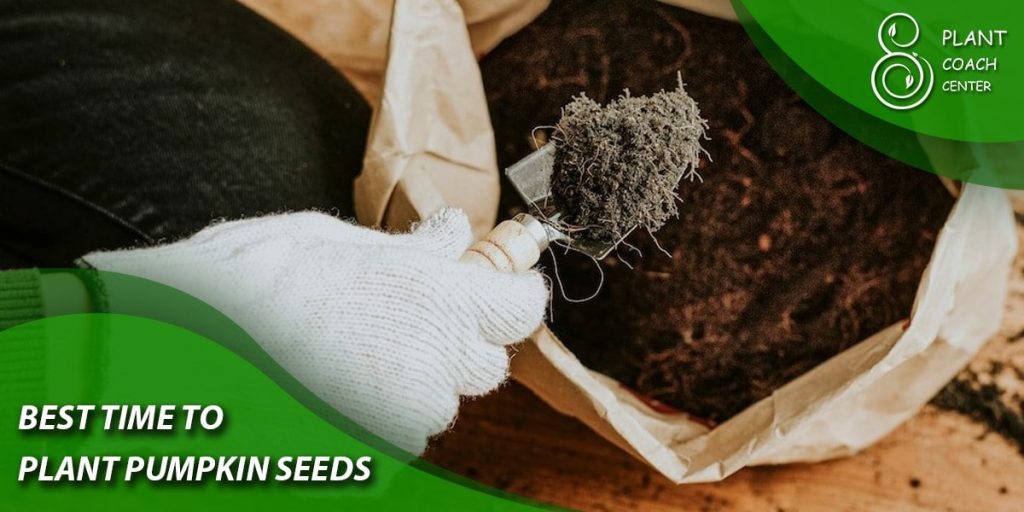
Best Time to Plant Pumpkin Seeds
Now that we’ve covered the factors that can affect when to plant pumpkin seeds, let’s discuss the best time to plant based on these factors.
Determining the Ideal Planting Time for Your Region
The ideal planting time for pumpkin seeds varies depending on your geographic location. In general, you should plant your seeds 2-4 weeks after the last frost date in your area. You can find your local frost dates by checking with your local extension service or using an online tool.
Early Planting vs. Late Planting
There are advantages and disadvantages to planting pumpkin seeds early or late in the season. Early planting can give your plants a longer growing season and may result in larger pumpkins.
However, early planting can also be risky if there’s a late frost or if your soil is too cold and wet. Late planting can help you avoid these risks, but may result in smaller pumpkins and a shorter growing season.
Factors to Consider When Deciding on Planting Time
When deciding on the best time to plant pumpkin seeds, it’s important to consider the following factors:
– Your local climate and weather patterns
– Soil temperature and conditions
– The maturity rate of the pumpkin variety you’re planting
– The length of the growing season in your area
How to Determine Soil Temperature for Planting
Soil temperature is a critical factor to consider when planting pumpkin seeds. You can use a soil thermometer to measure the temperature of your soil at a depth of 2-3 inches. In general, you should wait to plant your seeds until the soil temperature is at least 60 degrees Fahrenheit.
Preparing for Pumpkin Planting
Preparing your soil properly is essential for growing healthy and productive pumpkin plants. Here are some steps you can take to prepare your soil for planting pumpkin seeds:
How to Prepare the Soil for Pumpkin Seeds
To prepare your soil for pumpkin seeds, you should:
– Clear the planting area of any weeds or debris
– Loosen the soil to a depth of 12-18 inches
– Mix in compost or other organic matter to improve soil structure and fertility
– Test your soil pH and adjust if necessary
Choosing the Right Location for Planting
Pumpkins require a lot of space and sunlight to grow, so it’s important to choose a location that receives at least 6 hours of direct sunlight per day. You’ll also need to choose a location that has well-draining soil and good air circulation.
Soil Testing and Nutrient Requirements
Testing your soil can help you determine its nutrient content and pH level. You can purchase a soil testing kit or have your soil tested professionally. Based on the results, you can add the necessary nutrients to your soil to ensure that your pumpkin plants have everything they need to grow and produce healthy fruit.
Adding Organic Matter to the Soil
Adding compost or other organic matter to your soil can improve soil structure and fertility. Organic matter can help retain moisture, improve soil aeration, and provide essential nutrients to your plants.
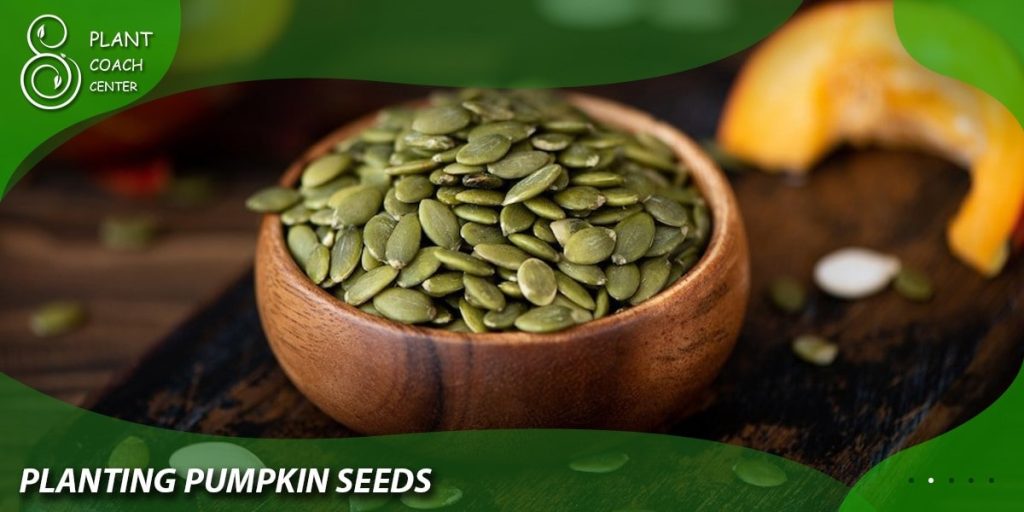
Planting Pumpkin Seeds
Once you’ve prepared your soil, it’s time to plant your pumpkin seeds. Here’s what you need to know:
How to Plant Pumpkin Seeds
To plant your pumpkin seeds, you should:
– Dig a hole that’s 1-2 inches deep
– Place the seed in the hole and cover it with soil
– Space the seeds 18-24 inches apart
– Water the seeds immediately after planting
Seed Placement and Spacing
Pumpkin seeds should be planted in hills or mounds, with 3-5 seeds per hill. The hills should be spaced 6-8 feet apart to give the vines room to grow. Alternatively, you can plant the seeds in rows spaced 6-8 feet apart, with 2-3 feet between each plant.
Watering and Fertilizing Pumpkin Seeds
Pumpkin seeds need regular watering to germinate and grow. Keep the soil moist but not waterlogged, and water the seeds deeply once or twice a week. You can also fertilize your pumpkin plants with a balanced fertilizer or compost tea.
Protecting Pumpkin Seeds from Pests and Diseases
Pumpkin seeds are vulnerable to a variety of pests and diseases, including squash bugs, cucumber beetles, and powdery mildew. To protect your plants, you can use natural remedies like neem oil or insecticidal soap, or plant companion plants like marigolds or nasturtiums to repel pests.
Caring for Pumpkin Plants
Caring for your pumpkin plants is essential for ensuring that they grow healthy and produce abundant fruit. Here are some tips for caring for your pumpkin plants:
Monitoring Plant Growth and Health
Regularly monitoring your pumpkin plants can help you spot problems early and take corrective action. Look for signs of pests, disease, or nutrient deficiencies, and address them promptly.
Pruning and Training Pumpkin Vines
Pumpkin vines can grow quite long and sprawling, which can make them difficult to manage. Pruning and training your vines can help control their size and shape, and promote better air circulation and fruit production.
Managing Pests and Diseases
Pests and diseases can be a major problem for pumpkin plants. To manage these issues, it’s important to use a combination of prevention and treatment methods. This may include using natural remedies, practicing good sanitation, and being vigilant about monitoring your plants.
Fertilizing and Watering Pumpkin Plants
Pumpkin plants require regular fertilizing and watering to stay healthy and productive. Use a balanced fertilizer or compost tea to feed your plants, and water them deeply once or twice a week.
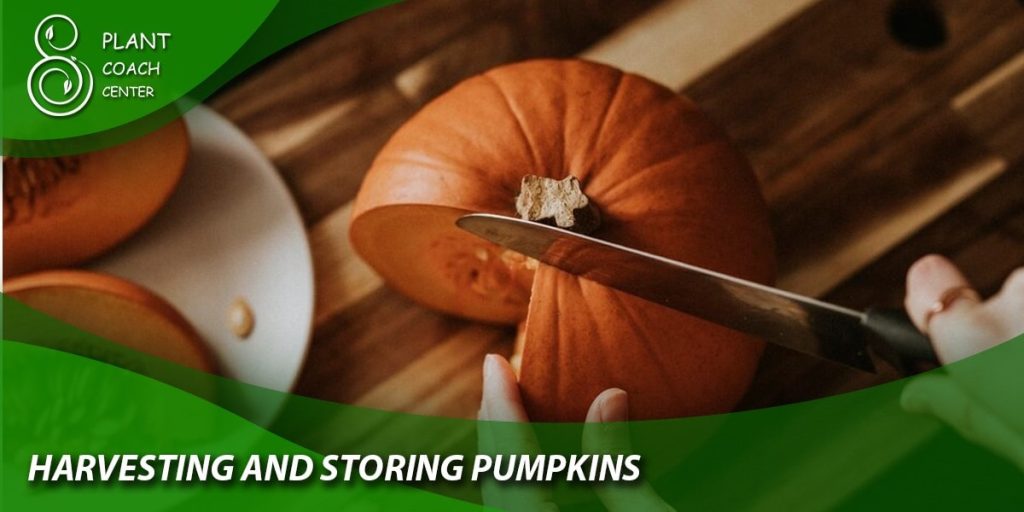
Harvesting and Storing Pumpkins
Harvesting and storing your pumpkins properly can help ensure that they stay fresh and flavorful for as long as possible. Here’s what you need to know:
Signs of Pumpkin Maturity
Pumpkins are ready to harvest when they’re fully mature and their skin is hard and unblemished. Look for a deep, uniform color and a dull, matte finish on the skin.
Harvesting Pumpkins and Storing Them Properly
To harvest your pumpkins, use a sharp knife or pruners to cut the stem a few inches above the fruit. Then, store your pumpkins in a cool, dry, well-ventilated space. They can be stored for several months if kept in the right conditions.
Saving Pumpkin Seeds for Future Planting
If you want to save pumpkin seeds for future planting, simply scoop the seeds out of the pumpkin and rinse them clean. Then, spread them out on a paper towel or screen to dry. Once they’re dry, store them in a cool, dry place until you’re ready to plant them.
In the next section, we’ll discuss some common problems with pumpkin seeds and plants, and how to troubleshoot them.
Common Problems with Pumpkin Seeds and Plants
Despite your best efforts, you may encounter some problems when growing pumpkins. Here are some common issues and how to address them:
Common Issues with Pumpkin Seeds and Germination
Pumpkin seeds can be difficult to germinate, especially if they’re planted too early or in cold, wet soil. To improve your chances of success, make sure your soil temperature is at least 60 degrees Fahrenheit, and plant your seeds at the right time for your region.
Common Pests and Diseases Affecting Pumpkin Plants
Pumpkin plants are vulnerable to a variety of pests and diseases, including squash bugs, cucumber beetles, and powdery mildew. To prevent these issues, practice good sanitation, use natural remedies, and monitor your plants regularly.
Environmental Factors Affecting Pumpkin Growth
Environmental factors like temperature, humidity, and soil conditions can also affect pumpkin growth. To address these issues, make sure your plants are getting enough water and nutrients, and adjust your growing conditions as needed.
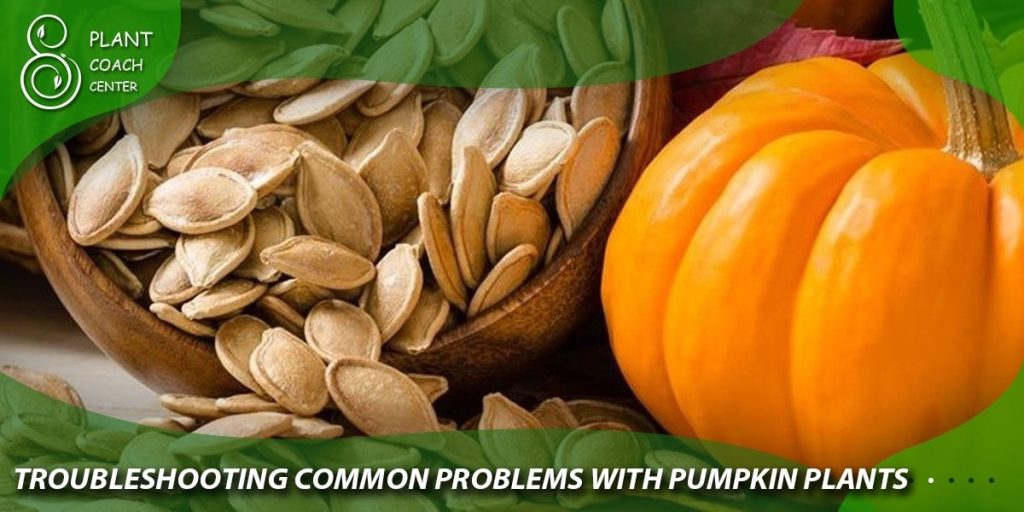
Troubleshooting Common Problems with Pumpkin Plants
Here are some additional tips for troubleshooting common problems with pumpkin plants:
Poor Pumpkin Plant Growth
If your pumpkin plants aren’t growing well, it may be due to poor soil conditions, inadequate watering, or nutrient deficiencies. Make sure your soil is well-draining and has plenty of organic matter, and water your plants deeply once or twice a week. You can also fertilize your plants with a balanced fertilizer or compost tea.
Yellowing Leaves on Pumpkin Plants
Yellowing leaves on pumpkin plants can be a sign of nutrient deficiencies, pest damage, or disease. To address this issue, check your plants for signs of pests or disease, and make sure they’re getting enough water and nutrients.
Cracked or Splitting Pumpkins
Cracked or splitting pumpkins are often the result of uneven watering or sudden changes in temperature or humidity. To prevent this issue, water your plants regularly and consistently, and avoid overwatering or underwatering.
Small or Misshapen Pumpkins
Small or misshapen pumpkins may be the result of poor pollination or inadequate fertilization. To address this issue, make sure your plants are getting enough water and nutrients, and consider hand-pollinating your flowers if necessary.
Powdery Mildew on Pumpkin Plants
Powdery mildew is a common fungal disease that can affect pumpkin plants. To prevent this issue, practice good sanitation, provide good air circulation around your plants, and use natural remedies like neem oil or baking soda to control the disease.
conclusion
In conclusion, planting and caring for pumpkin plants can be a rewarding and enjoyable experience. By understanding the factors that affect planting time, preparing your soil properly, and caring for your plants as they grow, you can grow healthy and productive pumpkins that will provide you with a bountiful harvest.
If you encounter any problems along the way, don’t hesitate to consult with a plant coach or gardening expert for personalized advice and guidance.
When should I plant pumpkins?
Plant pumpkins in late spring or early summer after the last frost date in your area.
How much space do pumpkins need to grow?
Pumpkin plants require ample space to spread and grow. Leave at least 6 to 8 feet between each plant, and ensure the rows are spaced 8 to 12 feet apart.
How long does it take for pumpkins to grow?
The time it takes for pumpkins to grow depends on the variety. On average, it takes around 75 to 100 days from planting to harvest.


